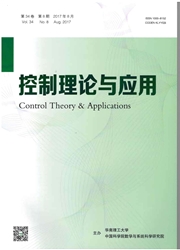

 中文摘要:
中文摘要:
针对污水处理过程溶解氧(DO)浓度控制问题,提出了一种基于前馈神经网络的建模控制方法(FNNMC).本文构造了神经网络建模控制系统,通过对建模神经网络和控制神经网络隐含层学习率的分析,证明了学习算法的收敛性以及整个系统的稳定性.最后,本文基于国际基准的Benchmark Simulation Model No.1(BSM1)进行了仿真实验,验证了合理选取学习率的重要性,并通过与PID和模型预测控制(MPC)等已有控制方法的比较,验证了神经网络建模控制方法针对污水处理过程溶解氧浓度控制具有良好的建模能力,更高的控制精度以及更好的动态响应能力.
 英文摘要:
英文摘要:
A feedforward neural network modeling and control (FNNMC) method is proposed, and its application sys- tem is designed for controlling the dissolved oxygen (DO) concentration in wastewater treatment process. The convergence of the learning algorithm and the stability of the feedforward neural network modeling and control system are proved based on the analysis of the learning rates of hidden layers in both controller neural network and modeling neural network. In applying this method to the Benchmark Simulation Model No.1 (BSM1), the simulation results reveal the importance of properly selecting the learning rates. Comparing with other control methods such as PID control method and model predic- tive control (MPC) method, we find that this method provides for the control process of DO concentration with desirable modeling ability and high control precision in steady-state as well as transient state.
 同期刊论文项目
同期刊论文项目
 同项目期刊论文
同项目期刊论文
 Research on artificial neural networks with spatial architecture based on span connection and latera
Research on artificial neural networks with spatial architecture based on span connection and latera Dissolved oxygen concentration predictive control based on a self-organizing RBF neural network mode
Dissolved oxygen concentration predictive control based on a self-organizing RBF neural network mode Neural network on-line modeling and controlling method for multi-variable control of wastewater trea
Neural network on-line modeling and controlling method for multi-variable control of wastewater trea A fast and efficient two-phase sequential learning algorithm for spatial architecture neural network
A fast and efficient two-phase sequential learning algorithm for spatial architecture neural network Hierarchical neural network modeling approach to predict sludge volume index of wastewater treatment
Hierarchical neural network modeling approach to predict sludge volume index of wastewater treatment Nonlinear systems modeling based on self-organizing fuzzy-neural-network with adaptive computation a
Nonlinear systems modeling based on self-organizing fuzzy-neural-network with adaptive computation a 期刊信息
期刊信息
